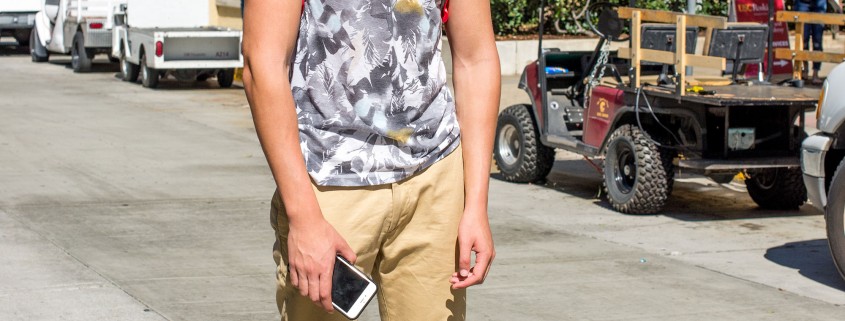New scooters gaining popularity on campus
Students venturing onto campus this semester may have noticed a new mode of transportation for students. Commonly referred to as self-balancing scooters or “hoverboards,” the new vehicles resemble a Segway without the handlebars.
According to Laura Lee, a senior majoring in public relations, the vehicles were initially made popular by the company IO HAWK and its active social media marketing strategies. Soon after, companies such as Airwheel also began manufacturing variations of self-balancing scooters, adding to the hype.
“A lot of people know [the vehicles] as IO HAWKs,” Lee said. “They’re really good about sending their product to people that are seen using them, so that more people are starting to use them in general.”
Several students who ride these scooters attributed the increase in riders on campus to the growing number of celebrities who advertise the product through social media.
“I just saw a lot of people, through Instagram, having them, like Chris Brown, Justin Bieber, and people like that,” said Kyle Iverson, a senior majoring in business administration.
Iverson noted that he made the switch over from skateboarding on campus to using the scooter because of how much more fun the latter was.
“It’s just different, you know? It’s nothing like you’ve ever done before, so it’s like going on a roller coaster for like the first time type of feel — it’s really intriguing,” Iverson said. “Getting from Point A to B is just a lot more entertaining.”
Lee, a former cyclist, said she made the switch due to the intuitive technology of the self-balancing scooter.
The self-balancing scooter provides two functions: accelerate and stop. Riders simply just need to lean forward to increase speed and lean back when they wish to slow down or stop. The device makes turns by sensing the rider’s body movements.
“I feel more mobile,” Lee said. “I feel like it’s more of an extension of my legs, whereas a bike is more of a tool that takes me places. It almost feels like I’m a superhero when I am on it in a way, because it’s like only me being on top of one little thing that transports me really fast.”
As the number of self-balancing scooters is growing on campus, Lee acknowledged that the cost of the vehicles could serve as a huge deterrent for students who may wish to join the trend.
“The thing is, it’s a very expensive toy and a lot of younger people want it, but they’re not the ones with the money to be buying it,” she said. “It’s not a product that’s easy to make cheap.”
However, Lee still encourages students to test-drive the vehicle.
“I feel like some people like it, some people don’t. I do think everyone should try standing on it,” Lee said. “I know that some people are scared like [I was], but once I figured out how to do it, I was obsessed.”
Jordan McLaughlin, a sophomore majoring in sociology, believes that the popularity of the self-balancing scooters will continue to grow among students.
“That’s the way the world is,” McLaughlin said. “How technology is moving at this point, I feel like [they are] the future.”

